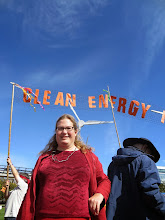Tesla Motors recently announced that it would share its technology patents, which has put a spotlight on open source and open standards. These standards already play a huge role in the computer industry: PCs have an open architecture and the World Wide Web has open standards. Google built its business on the open source Apache server and developed the open Android operating system. In 2011, Tioga Energy released an open source solar PPA. Can open standards and open source benefit the community shared solar industry?
Shared renewable energy systems (a common example is known as a solar garden) provide electricity that is credited to multiple utility customers. Shared systems are often managed by third parties, which must regularly communicate data to the utility, such as the proportion of energy to be credited to each account. Utilities use a variety of different billing software packages and credit participants in different ways, such as virtual net metering and community solar tariffs.
One of the very first solar gardens was developed in Ellensburg, Washington in 2006 with about 90 subscribers. Every three months, the resource manager of this small municipal utility would physically read the production meter. The kWh produced would be entered into a simple spreadsheet to calculate the billing credits, equal to each subscriber’s fractional interest multiplied by the revenue generated by the array. Utility billing department staff would then manually credit each subscriber account by the calculated amount. As the community renewables industry grows, managers require an automated and secure means of communicating between shared system managers and billing.

